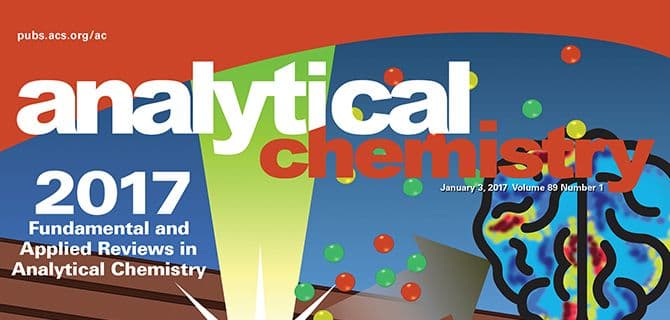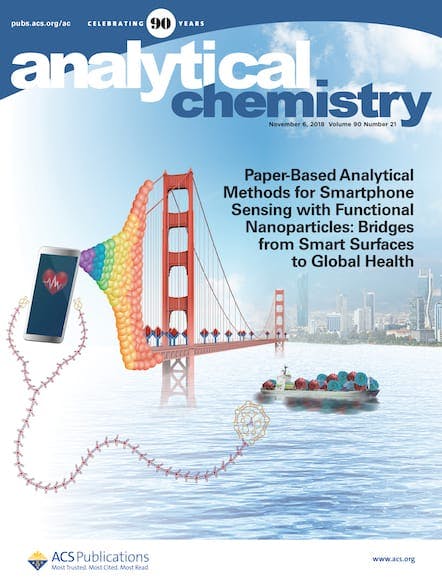This editorial originally appeared in Analytical Chemistry. There are many aspects to consider when writing a manuscript. Besides reporting and discussing your results, you need to include the details required for a skilled scientist to reproduce your work. One area that has failed to get adequate attention is safety. Analytical Chemistry, and in fact all […]

This editorial originally appeared in Analytical Chemistry.
There are many aspects to consider when writing a manuscript. Besides reporting and discussing your results, you need to include the details required for a skilled scientist to reproduce your work. One area that has failed to get adequate attention is safety. Analytical Chemistry, and in fact all ACS journals, are changing our author guidelines to include the statement: Authors must emphasize any unexpected, new, and/or significant hazards or risks associated with the reported work. The goal is not to ask that you list all possible hazards but to inform readers of any serious or atypical safety concerns that may not be obvious to the reader.
Why the change? There have been a number of recent articles on laboratory safety, including an interesting article by Grabowski and Goode(1) that examined the policies of 726 chemical journals with regard to requiring authors to declare safety issues. They found many journals do not explicitly require safety concerns to be disclosed to readers. This article follows an important 2014 National Research Council study(2) that stated that it is the authors’ duty “to inform future researchers about the hazards of carrying out a reported procedure, but also allow the young scientists writing the papers to recognize that this is a professional requirement.” They suggest that authors be required to include strategies for hazard identification and risk mitigation in the experimental section, and we agree. By establishing our new disclosure requirements, we are taking an important step toward ensuring our readers are informed about potential hazards when duplicating published work.
Asking that the authors who performed the reported experiments provide necessary safety precautions makes good sense. They should know about any significant safety concerns related to their research that may not be obvious to those unfamiliar with the protocols used. While most trained analytical chemists may be aware of standard safety issues, with these ranging from lasers, high voltages, and chemical hygiene, there can be unexpected issues related to some types of research. As an example, my group works with neuropeptides but occasionally has worked with purifying peptide toxins. The experimental protocols are similar, but it is important that those dissecting and working with extremely toxic peptides understand the safety concerns. I am sure many of you know of similar situations.
And if you do not think such attention to laboratory safety is needed, I encourage you to read an alarming report of laboratory safety that was just published.(3) This article includes a number of stark reminders of what happens when something goes wrong and also contains some startling facts about the number of chemistry laboratory incidents that occur.
Given the current safety cultures in many laboratories, a statement addressing the disclosure of potential hazards in our guidelines may only be a first step. All of us need to carefully look at the training and safety procedures at our institutions and companies. We need to do everything we can to ensure a safe environment for those working in our laboratories and provide safety notifications for those reproducing our research. Let us make sure the institutions, researchers, authors, and journals work together to safeguard the researchers in our profession.
There are many aspects to consider when writing a manuscript. Besides reporting and discussing your results, you need to include the details required for a skilled scientist to reproduce your work. One area that has failed to get adequate attention is safety. Analytical Chemistry, and in fact all ACS journals, are changing our author guidelines to include the statement: Authors must emphasize any unexpected, new, and/or significant hazards or risks associated with the reported work. The goal is not to ask that you list all possible hazards but to inform readers of any serious or atypical safety concerns that may not be obvious to the reader.
Why the change? There have been a number of recent articles on laboratory safety, including an interesting article by Grabowski and Goode(1) that examined the policies of 726 chemical journals with regard to requiring authors to declare safety issues. They found many journals do not explicitly require safety concerns to be disclosed to readers. This article follows an important 2014 National Research Council study(2) that stated that it is the authors’ duty “to inform future researchers about the hazards of carrying out a reported procedure, but also allow the young scientists writing the papers to recognize that this is a professional requirement.” They suggest that authors be required to include strategies for hazard identification and risk mitigation in the experimental section, and we agree. By establishing our new disclosure requirements, we are taking an important step toward ensuring our readers are informed about potential hazards when duplicating published work.
Asking that the authors who performed the reported experiments provide necessary safety precautions makes good sense. They should know about any significant safety concerns related to their research that may not be obvious to those unfamiliar with the protocols used. While most trained analytical chemists may be aware of standard safety issues, with these ranging from lasers, high voltages, and chemical hygiene, there can be unexpected issues related to some types of research. As an example, my group works with neuropeptides but occasionally has worked with purifying peptide toxins. The experimental protocols are similar, but it is important that those dissecting and working with extremely toxic peptides understand the safety concerns. I am sure many of you know of similar situations.
And if you do not think such attention to laboratory safety is needed, I encourage you to read an alarming report of laboratory safety that was just published.(3) This article includes a number of stark reminders of what happens when something goes wrong and also contains some startling facts about the number of chemistry laboratory incidents that occur.
Given the current safety cultures in many laboratories, a statement addressing the disclosure of potential hazards in our guidelines may only be a first step. All of us need to carefully look at the training and safety procedures at our institutions and companies. We need to do everything we can to ensure a safe environment for those working in our laboratories and provide safety notifications for those reproducing our research. Let us make sure the institutions, researchers, authors, and journals work together to safeguard the researchers in our profession.
Learn more about Analytical Chemistry.
